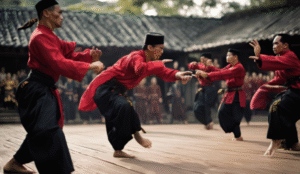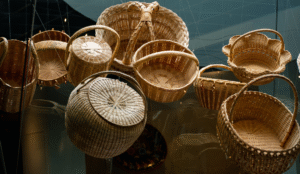Street Busker Kuala Lumpur: The Hidden Art of Malaysia’s Music Scene
There’s a moment in bustling Bukit Bintang, the heart of Kuala Lumpur, when you’re walking along the neon-lit sidewalks and you hear a guitar, a sultry saxophone, or a voice carrying effortlessly over the hum of traffic. That sound? It’s the unmistakable pulse of a street busker, weaving magic amid the city’s lights and sounds. What if I told you this thriving street performance scene is one of Malaysia’s best-kept cultural gems—one that quietly reflects the soul of the city?
In this article we’ll dive into the world of buskers KL, explore the broader realm of street entertainment, and highlight how some of the famous buskers in Malaysia are shaping both tourism and culture. We’ll walk through how the scene works, where to find it, how it’s evolving, and why it matters—not just for the musician, but for the city and the on-looking audience.
Frequently Asked Questions (FAQ)
1. Where can you find the best places to busk in Kuala Lumpur?
Some of the most popular spots for a street busker in Kuala Lumpur include Bukit Bintang, Central Market, Pasar Seni, and along the vibrant streets of Jalan Alor. These areas attract both locals and tourists, offering great exposure for buskers KL to perform. However, it’s best to ensure you have the required permit from DBKL before setting up your performance.
2.Is busking allowed in Malaysia?
Yes, busking is legal in Malaysia — but it’s regulated. Performers must apply for a license from Dewan Bandaraya Kuala Lumpur (DBKL) or the relevant local council before performing in public spaces. This helps maintain quality and safety standards in street entertainment areas across the city.
3. Who is the most famous busker in Malaysia?
There are several famous buskers in Malaysia who have turned their street performances into professional music careers. Artists like Najwa Mahiaddin, Zee Avi, and several emerging talents from buskers KL have gained national attention through social media and live performances. Their success stories inspire new street performers to pursue their passion with pride.
4. Do you need a license to busk in Malaysia?
Yes. To perform legally as a street busker in Malaysia, you must obtain a permit or license from DBKL or your local city council. The process usually includes an audition and approval of performance type, ensuring professionalism and harmony among street performers.
5. How can I start busking in Kuala Lumpur?
If you’re new to street entertainment, start by preparing a short performance set, apply for a busking license from DBKL, and choose a strategic spot like Bukit Bintang or Central Market. Many buskers KL recommend performing during weekends or evenings when foot traffic is highest. Building consistency and audience connection is key to becoming one of the next famous buskers in Malaysia.
What Is a Street Busker & Why It Matters
Defining the term
Let’s start with the basics: A street busker is an individual (or a small group) who performs music, dance or other performance art in public spaces, relying largely on the voluntary contributions of passers-by. Think of a guitar slung over a shoulder, a microphone set up on a pavement, or a small drum set up in a food-court walkway.
In Kuala Lumpur and Malaysia more broadly, busking may also involve visual art, traditional instruments, spoken word and eclectic blends of genres. It’s not just a cover-band situation—you’ll find creative mixes of pop, folk, indie, and even a bit of street-theatre.
Why street entertainment like this matters
- Cultural vibrancy: When you stroll through KL’s pedestrian zones and hear live music or see live performance, you sense a city alive. The buskers contribute to that texture.
- Accessibility: Street entertainment is free (or at least free to watch). You don’t have to buy a concert ticket; you simply stop, listen, maybe drop some change.
- Tourism & local identity: As KL prepares for massive tourism campaigns, local government pushes busking as part of tangible cultural experiences.
- Musicians’ livelihood: For many performers, busking is more than hobby-fare; it’s a way to earn, to be seen, and to practise in front of live audiences.
- Mixing the old and new: The scene also allows fusion of traditional Malaysian instruments or folk melodies with modern genres—bridging generational tastes.
So yes—the street busker scene is far from fringe; it’s an essential thread in KL’s rich cultural tapestry.
A Brief History of Busking in Kuala Lumpur

Early days & stigma
Street performance wasn’t always embraced. In Malaysia, busking used to be viewed with suspicion—sometimes conflated with begging, seen as low-status. Thus, performers often had to contend with regulation, unclear legal status, or social stigma.
Shift into acceptance
Over recent years, the tide changed. The Malaysian Buskers Club helped legitimize performers, negotiate with authorities, and clean up the public image of buskers. Government support also grew, providing designated zones and permits. Authorities now encourage traditional instruments and local culture to be integrated rather than purely pop covers.
Turning point & current era
This shift means today’s buskers in KL perform under clearer rules, often in high-foot-traffic zones, and viewers—both tourists and locals—are more open-minded. Buskers are now part of the urban experience rather than hidden oddities.
Where to Find Buskers in KL: Hot Spots for Street Entertainment
Here’s a practical guide to where you can experience vibrant busking in Kuala Lumpur.
Perhaps the most iconic. The pedestrian-friendly stretch includes high foot traffic, night markets and food streets. The juxtaposition of shopping, street food and live performance makes for a memorable combination.
The heritage art-market zone is not just for crafts—buskers often perform here. The pedestrianised walkway and evening crowd create a relaxed environment for music or acoustic sets.
Busy food street + live performance = good vibes. If you love street food, you’ll find the perfect soundtrack here with talented street performers.
Open public square, heritage buildings, and enough space for a small audience to gather. It’s a historical and cultural hub that offers a charming backdrop for street music.
- Other designated zones
The city has listed multiple official busking locations including Brickfields, River of Life, and Medan Pasar. These are regulated zones where the practice is permitted with conditions.
Tips for experiencing the vibe
- Arrive early evening when foot traffic peaks but before the crowd gets too heavy.
- Bring small change or tips: contributions support the performer, and it’s part of the culture.
- Stop, listen with attention for a few minutes so your presence supports the energy.
- Respect the performer’s space—not trying to film for long without permission.
- Combine the experience with a walk or street food hunt for the best atmosphere.
Behind the Scenes: What It’s Like to Be a Busker in KL
The setup & the craft
A typical street busker in Kuala Lumpur might bring:
- A guitar, keyboard or small amp
- Portable sound equipment or even acoustic setup
- A hat or open instrument case for donations
- A sign with their name or social handle
- Outfits or props that make them memorable
In KL’s busker scene, diversity is high—you’ll hear everything from acoustic singer-songwriters, rock covers, traditional solos, to beatboxing and performance art.
Challenges and realities
- Competition for space: With limited zones, buskers must share space and time fairly.
- Noise & regulation: There are sound restrictions and time windows for performance.
- Income uncertainty: Tips vary wildly; some nights can be rewarding, others quiet.
- Perception: Although improved, some still view busking as less “professional.”
- Weather and logistics: Rain or crowd congestion can affect the setup.
The social & personal side
For most, busking isn’t just about money—it’s about sharing music and connecting with people. Many say they perform for the joy of expression and the spontaneous smiles of strangers. Buskers often mix languages and genres to reach wider audiences, reflecting Malaysia’s multicultural identity. Some even build loyal followings, getting invited to cafés or events later.
Regulation & evolution
The city hall encourages buskers to include more local culture and traditional instruments. Performers are also advised to maintain professional conduct, appropriate attire, and sound control. Busking has evolved from casual hobby to a recognized creative outlet shaping the cultural rhythm of Kuala Lumpur.
Famous Buskers in Malaysia: Stories Worth Telling
While many street performers remain anonymous, some have become icons of Malaysia’s creative scene.
A beloved folk singer-songwriter who started his journey performing on the streets of Kuala Lumpur. Meor’s poetic lyrics and soulful performances inspired countless young artists. His story shows how busking can evolve into a professional music career.
Known among locals and tourists as ” Bob Sentuhan which is the picture on top, Busker Bob became somewhat legendary for his high-energy performances and friendly banter. His regular spot in Bukit Bintang has drawn countless visitors to stop, record, and share his performances online, turning him into a symbol of the KL street spirit.
The Malaysian Buskers Club
This organization supports street artists by helping with permits, training, and event organization. Through their advocacy, buskers now have clearer rules and opportunities to perform legally and safely.
Why these stories matter
- They highlight that busking is serious art.
- They show how performers can rise from the street stage to larger audiences.
- They connect personal passion with Malaysia’s creative identity.
How to Support & Engage with the Street Busker Scene
If you’re reading this and thinking “I want to experience this, or even participate,” here’s how you can do it meaningfully.
As an audience member
- Listen first: Give a few minutes of attention.
- Tip generously: Every contribution helps sustain the performer.
- Be respectful: Avoid interrupting or blocking foot traffic.
- Ask permission before filming: Buskers appreciate courtesy.
- Share online: Tag the performer’s social handles and help them grow.
- Support diversity: Seek performances with traditional instruments or unique styles.
If you’re a performing busker (or aspiring)
- Know the zones: Perform in official areas to avoid being moved.
- Obtain a permit: Especially if you use sound amplification.
- Mind your volume: Respect nearby shops and residences.
- Develop a signature style: Something that makes people remember you.
- Engage your audience: Smile, talk, and thank those who stay or tip.
- Leverage social media: Post clips, announce performance times, build followers.
- Collaborate: Partner with cafés, night markets or events for steady exposure.
For local authorities and communities
- Maintain dedicated busking zones and promote them in tourism campaigns.
- Offer short workshops on performance, branding, and sound management.
- Ensure fair access and respect for performers.
- Create programs linking buskers with festivals and cultural events.
Why This Matters for Kuala Lumpur’s Music Scene
The busker culture in KL does more than entertain—it energizes the city’s creative heartbeat.
- Talent discovery: Street performance often serves as the first stage for many young artists.
- Cultural preservation: The inclusion of traditional instruments keeps heritage alive.
- Urban character: Street entertainment gives KL its unique, vibrant atmosphere.
- Tourism value: Busking adds authenticity and charm to city experiences.
- Youth engagement: Encourages artistic expression among Malaysia’s younger generation.
- Economic ripple: Crowds drawn by performances support nearby stalls, shops, and cafés.
The city’s musical identity thrives not only in concert halls but also on the pavements where music meets everyday life.
Challenges & Opportunities Ahead
Key Challenges
- Regulatory clarity: Many still struggle to understand exact rules for permits and volume limits.
- Income volatility: Dependence on public tips makes financial stability uncertain.
- Noise conflicts: Balancing entertainment and nearby businesses can be tricky.
- Public perception: Some outdated stereotypes remain.
- Limited resources: Many buskers lack access to quality equipment.
Opportunities
- Digital visibility: Social media helps buskers build global audiences.
- Creative innovation: Fusion of traditional and modern genres keeps things fresh.
- Collaborative culture: Forming collectives or busker festivals boosts recognition.
- Partnerships: Teaming with cafés or markets for regular shows.
- Cultural events: Integration into festivals and tourism initiatives for bigger exposure.
With steady growth, KL’s street performance scene can evolve into one of Southeast Asia’s most dynamic showcases of local creativity.
A Step-by-Step Guide for Experiencing the Scene
If you’re visiting Kuala Lumpur or simply want to immerse yourself in the world of buskers, here’s a quick guide:
- Plan your evening: Choose popular zones like Bukit Bintang or Central Market.
- Arrive around dusk: Buskers usually start when the city lights up.
- Listen & appreciate: Spend time watching at least one full song.
- Tip or support: Small gestures mean a lot to performers.
- Engage positively: Smile, applaud, and show encouragement.
- Share respectfully: If you record, tag them and credit the performance.
- Explore multiple spots: Different buskers perform at various hours.
- Try returning: Regular visits let you notice how the scene evolves.
- If you’re a musician—try it!: Busking can build confidence and exposure.
- Reflect on the art: Recognize how these small performances shape the city’s creative pulse.
Conclusion
In the dynamic city of Kuala Lumpur, the world of the street busker is a hidden yet luminous thread. It’s where artistry meets the urban pulse, where a single guitar and a voice merge with the rhythm of city life. The scenes of buskers KL are rich with energy and culture—not just as entertainment, but as creative expressions that define Malaysia’s soul.
From shedding the old stereotype of busking as begging to gaining recognition as cultural artistry, the journey has been transformative. Today’s buskers in Malaysia are not just performing for spare change—they’re sharing stories, keeping traditions alive, and inspiring the next generation of artists.
So next time you stroll through Kuala Lumpur’s lively streets, stop when you hear the beat of a drum or the strum of a guitar. Listen. Smile. Drop a coin. You might just witness the next rising star or feel the heartbeat of Malaysia’s music scene.
Call to Action: When you visit Kuala Lumpur, make it a point to experience a live street performance. Support the local artists, share their music, and become part of the growing legacy of Malaysia’s street entertainment.


